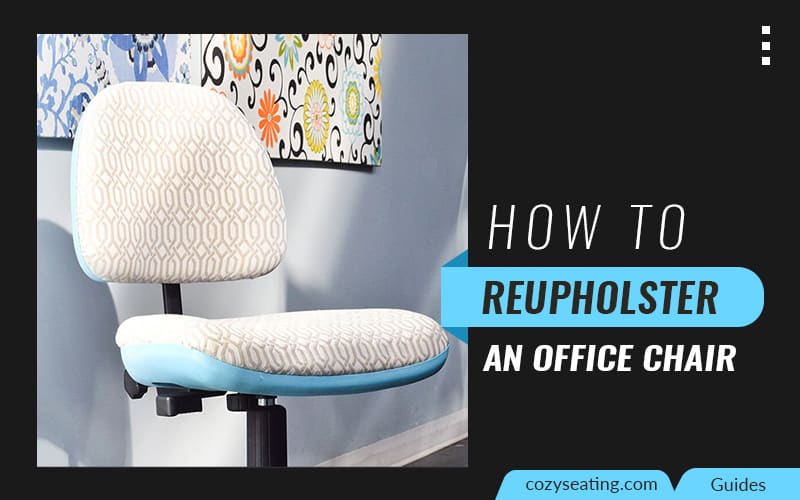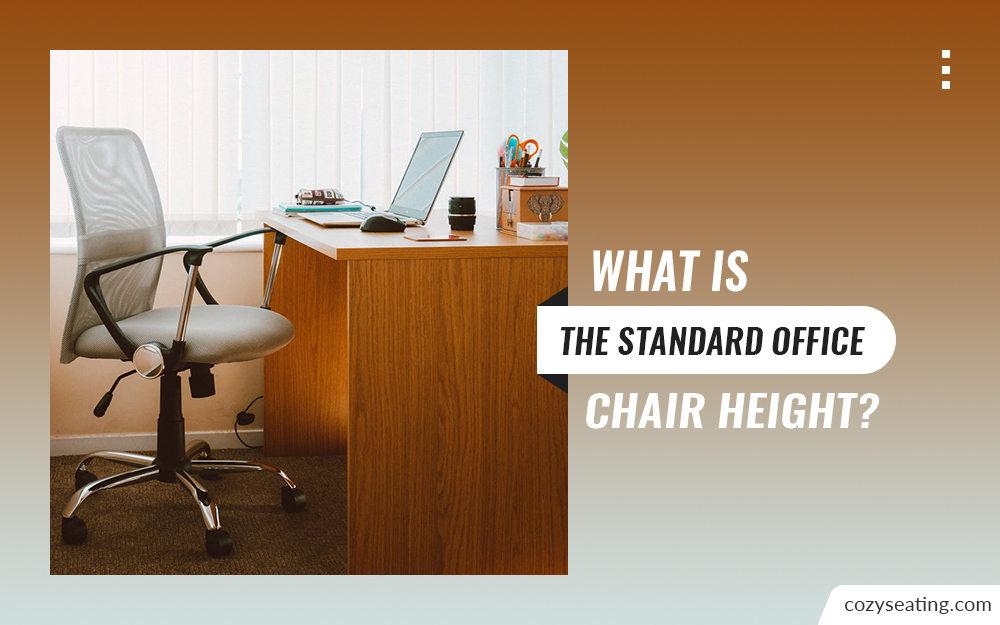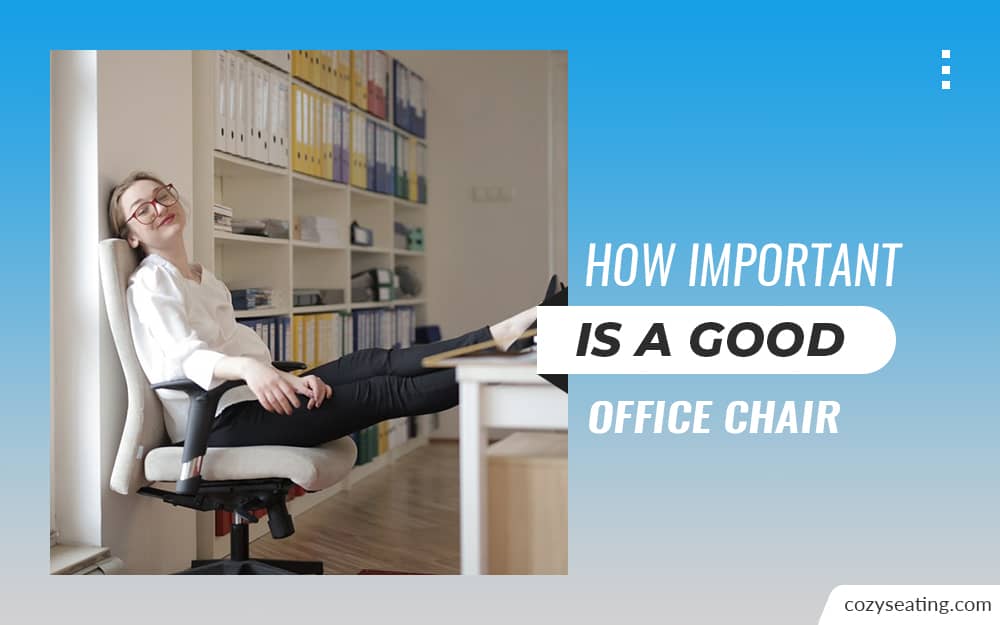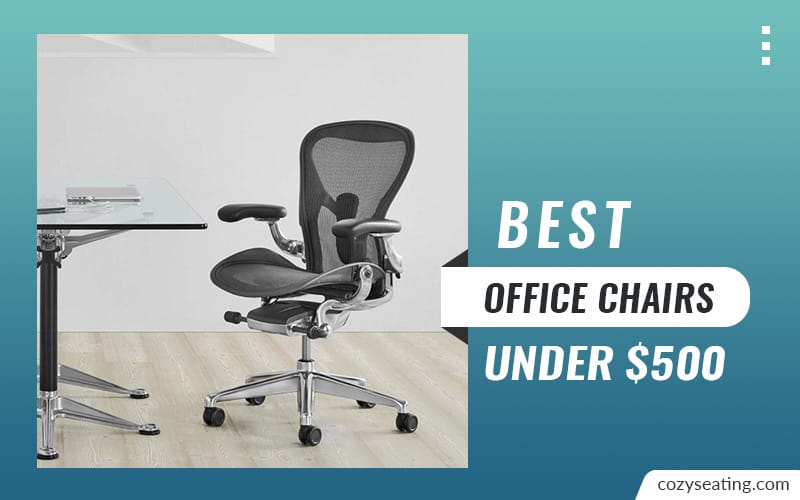
Disclosure: This site is reader-supported & contains affiliate links. We may earn a commission through products purchased using links on this page. Learn more

You’ve heard it said in the past that a standard office chair height is suitable for preventing back, neck, and head strains. It also prevents poor posture, which could otherwise have negative impacts on your health. You heard it right!
So, a standard office chair height should be 16 to 21 inches. The optimal height for a chair is determined by your height. For example, if you’re 5’10”, your optimal height should be 18.9 inches. If you bend when typing on your keyboard, then your office chair is too high. Adjust the chair height.
This article comprehensively discusses the right standard height for an office chair and how to know if your chair is too low. I’ll also tell you which is the best height for a computer desk. So, don’t stop reading until you’ve read the last line of this article.
Table of Contents
What Is The Standard Height Of An Office Chair?
Normally, a chair’s standard height is 16 to 21 inches – from floor to the seat. This isn’t to say that you can’t adjust the height of your office chair further. No, most office chairs allow height adjustment to accommodate both tall and short people alike.
An office chair with a standard height should:
Allow your feet to rest flat on the floor: While your feet rest on the floor, your knees should assume an angle of 90 degrees.
The entire body should be comfortable: While typing ensure that your elbows are at 90 to 110 degrees. The forearms, on the other hand, should be at equal height to the working desk. The shoulders, too, must be fully relaxed while you work. In addition, your back should be fully supported by the chair’s backrest.
In addition, the neck and arms shouldn’t strain either while you work. To be sure you’re sitting comfortably, ensure the gap between the inner thighs and the seat edge ranges between 1 to 2 inches (More on this later in the article).
What Is The Optimal Height For A Chair?
The optimal chair’s height, as I said, is based on your height. Even so, regardless of your height, you should be comfortable while working in your office chair.
Also, if the chair feels too low or high, you should be able to adjust and match your height. The rule of thumb?
Sit straight and face the computer directly. You shouldn’t be bending or straining to reach the working surface when working at your office desk.
I’ll make it easier for you by sharing a table that should guide you. Note, however, that the following measurements are general and are meant to give you an idea of the ideal optimal office chair height.
Therefore, if you’re uneasy when using any of these measurements, please customize your office chair further.
| Your Height (inches) | Desk Height (Floor to Seat) (inches) | Monitor Height (inches) | Chair Height |
| 4’10” | 21”-23” | 40”-42” | 12”-14” |
| 4’11” | 21”-23” | 40”-42” | 13”15” |
| 5’ | 22”-24” | 41”-43” | 13”-15” |
| 5’1” | 22”-24” | 41”-43” | 14”-16” |
| 5’2” | 22”-24” | 42”-44” | 14”-16” |
| 5’3” | 23”-25” | 43”-45” | 14”-16” |
| 5’4” | 23”-25” | 44”-46” | 15”-17” |
| 5’5” | 24”-26” | 44”-46” | 15”-17” |
| 5’6” | 24”-26” | 45”-47” | 15”-17” |
| 5’7” | 24”-26” | 46”-48” | 16”-18” |
| 5’8” | 25”-27” | 47”-49” | 16”-18” |
| 5’9” | 25”-27” | 47”-49” | 16”-18” |
| 5’10” | 26”-28” | 48”-50” | 16”-18” |
| 5’11” | 26”-28” | 48”-50” | 17”-19” |
| 6’ | 26”-28” | 49”-51” | 17”-19” |
| 6’1” | 27”-29” | 50”-52” | 17”-19” |
| 6’2” | 27”-29” | 51”-53” | 18”-20” |
| 6’3” | 28”30” | 52”-54” | 18”-20” |
| 6’4” | 28”-30” | 52”-54” | 19”-21” |
| 6’5” | 29”-31” | 53”-55” | 19”-21” |
| 6’6” | 29”-31” | 54”-56” | 19”-21” |
| 6’7” | 29”-31” | 54”-56” | 19”-21” |
| 6’8” | 29”-31” | 55”-57” | 20”-22” |
Is My Office Chair Too High?
Yes, your office chair is too high if you’re bending to type using your computer keyboard. Also, if when you use your office chair, your feet dangle freely in the air, then the chair is definitely too high for you. Consequently, your legs are likely to develop problems, the major one being, swelling.
One way to handle this problem effectively is by buying an ergonomic chair with a standard office chair height. A second option is to buy a footrest. This is ideal for non-adjustable office chairs.
Thirdly, if the elbows are raised above 90 degrees, your office chair is too high and you need to lower it. Beware, using an office chair that is too high also means that your back lacks support since you’ll be bending most time.
Denying your back support when working at an office table may result in musculoskeletal disorders (MSD) says, The Occupational Safety and Health Administration (OSHA). You can tell if you’re suffering from MSD if you’re experiencing numbness in the muscles, fatigue, pain, low blood circulation, and swelling.
Should My Chair Be Higher Than My Desk?
No, your office chair shouldn’t be higher than your desk because you’ll be forced to bend your head when typing. Consequently, you’ll experience neck and shoulder pains that will have adverse effects on your work.
Therefore, always ensure that the forearms are equivalent to the working desk.
How Do You Fix An Office Chair That Is Too High?
You fix an office chair that is too high by adjusting it. How? Here’s a step-by-step guide;
- Start by sitting on the chair. While there, position your back so as to lean against the backrest of your office chair.
- To check if there’s enough gap between your knees and the front edge, put 3 fingers. If they fit comfortably, then the gap is enough. If, however, there’s more space left after putting the fingers, increase the seat’s depth. How? Extend the depth of the seat. You achieve this by adjusting the slider of your office seat in the forward direction.
If your 3 fingers strain to fit in, then it’s too narrow. So, shorten(reduce) the seat depth. How do you do this? Adjust your office chair seat’s slider backward.
- Ensure that your feet are flat on the floor. Else, use a footrest so that they assume a 90 degrees angle. At this angle, your hips should be a little higher than your knees. This is a sure way of reducing lumbar discs’ pressure, which could otherwise be a result of the increase in the pelvis rotation.
- Do you have to lift your shoulders to reach your office working table? Do the armrests feel too high or too low? Adjust them to ensure that the forearms are resting on the arm pads. Make sure that both elbows are bending at about 90 degrees.
- If your office chair features armrests with adjustable width, it’s time to adjust them so that they suit your hands. Avoid a case where the armrests are too far from your body. This causes strain when typing. Adjust the armrest width so that your office chair’s upper armrest is vertical. Also, try rotating the arm pads to make the forearms comfortably rest on the arm pad.
- Based on your current body mass, adjust the swivel mechanism’s tension. To know if it’s well set, without using too much force, try reclining backward. If it is, the tension on the spring balances your body mass evenly.
- Without accentuating the spine’s inward curvature too high or low, customize the backrest. Make sure that the lumbar support your back’s lumbar area. To avoid strain and back pains, ensure that the spine is in its natural position when seated.
- Does your office chair has an adjustable headrest? Great. Adjust it. Positioning your head rightfully has a positive direct impact on your breathing system. Here’s what I mean; whenever the shoulders touch the backrest, the chest and the diaphragm lift. Consequently, you breathe better. So, how do you achieve this? Adjust the headrest so that your head leans back and your shoulders lean on the backrest – thereby, lifting the chest.
Is It Better To Sit High Or Low In A Chair?
It is neither better to sit high or low in an office chair. Let me explain. When you sit high in an office chair, your legs sway in the air. The lack of support that would otherwise be there if they were flat on the floor is no longer there. Consequently, your legs lack good circulation which makes them ache.
An office chair that is low also has adverse effects on your shoulders, neck, head, and hands. See, when the chair is low, your hands strain to reach the working table. As you strain to work, your neck and shoulders strain. Consequently, your head too suffers the consequences of strained posture.
The ideal height, therefore, is one that gives your feet the freedom to stay flat on the ground while your knees stay at a 90 degrees angle.
FAQs
Should My Chair Be Higher Than My Desk?
No, your chair should not be higher than your desk. Here’s why. When the chair is higher than your desk, your feet don’t touch the floor comfortably. Your head, on the other hand, bends all the time you’ll be typing or writing. This strains your knees, neck, shoulders, and head especially when you work for long hours.
A good chair is one that allows the forearms to align with the working table.
How tall should a chair be for a 30 inch desk?
For a 30 inch desk, you need a chair that is 18 inches tall. Thankfully, most average people can use this height comfortably.
What Is The Best Height For A Computer Desk?
Frankly, there’s no ideal height for computer desks. Generally, the best height for a computer desk is one that is ideal depending on your height. Even so, most desk chairs’ heights range between 16 to 21 inches, and they work well with a standard office chair height.
Is 32 Inches Too High For A Desk?
32 inches is too high for a short person’s desk. If, however, you’re tall, for example, 6’9”, 32 inches isn’t too high for you.
Is 36 Inches Too High For A Desk?
Considering that most people are 6’8” tall or shorter, 36 inches is too high for a desk. Even so, if you’re 6’9” tall, then 36 inches isn’t too high for a desk for you. A 36 inches desk is, however, ideal when working in a standing position.
How Do I Know If My Chair Is Too Low?
You can know if your office chair is too low if, when seated, your hips are lower than the knees. If this has been your position and is experiencing low back pain, know and understand that this sitting position is to blame.
A low chair causes a high degree of flexion, which causes lower back pains.
Benefits Of Using A Standard Office Chair Height
When you get to use a standard office chair height, you get a chance to enjoy several benefits. Below are some of the major ones;
- Better seating position equals optimized comfort, which equals high productivity
- Minimal fatigue due to lack of strain when working
- You get to enjoy good health due to maintenance of good seating posture
- Ease of mobility accompanied by increased working speed
The Last Word
Using a standard office chair height isn’t something you can forego so as to save money by buying expensive ergonomic chairs. The consequences of poor posture which is a result of using an office chair that is too high or too low are dire.
They include;
- Discomfort and numbness
- Neck and Lower back pains
- Poor blood circulation, especially in the legs
- Chronic injuries, for example, tunnel syndrome and tendonitis
You don’t want to deal with the above issues as some could cost you an arm and a leg. So, customize your office chair height accordingly. If your chair isn’t customizable, please buy a chair with a standard height.
Recommended Reading

How to Reupholster an Office Chair
Learn how to reupholster an office chair with this step-by-step guide. Find out how to recover, reupholster, or re-cover an office chair with this detailed guide.

How Important is a Good Office Chair?
How important is a good office chair? Well, Ignorance is no defense! Good office chairs boost productivity and allow good blood circulation. Click here to know.

12 Best Office Chairs under $500 To Buy in 2022
Are you searching for the best office chairs under $500? Well, search no more. This review will show you the 12 best models in the market. Enter to check our top picks.

8 Best Office Chair to Sit Cross Legged
Are you looking for a best office chair to sit cross legged? Here is a comprehensive review of the eight best options available on the market right now.
